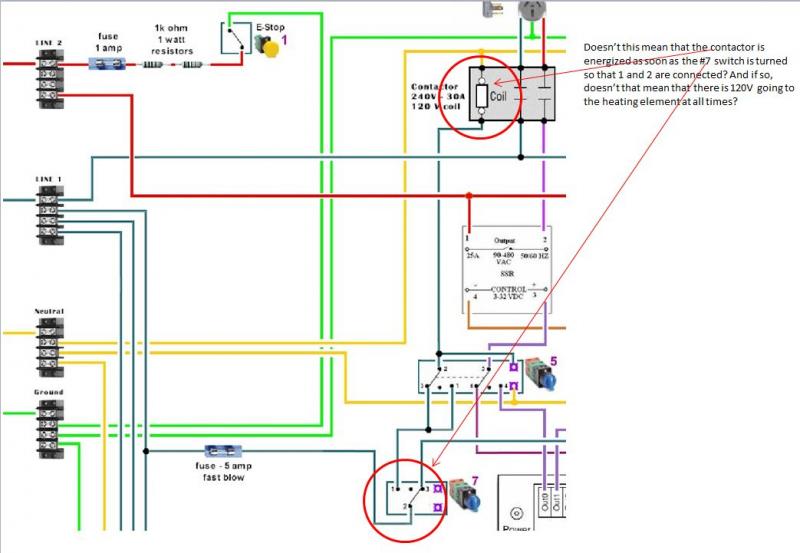I'm really having a hard time getting my head around how this contactor thing works. I'm in the process of wiring up a system that will use 2 - 5500W heating elements with 2 pumps. It'll be HERMS based. In the picture below I can't see how the heating element wouldn't have 120V going through it at all times as long as switch 7 is on. This certainly wouldn't be good. Can someone take a look at this and let me know if I'm just going crazy here? Maybe explain how it's supposed to work?





